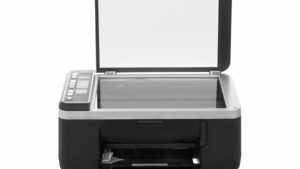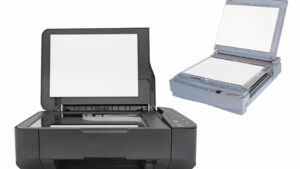In today’s fast-paced digital world, QR codes have become ubiquitous, appearing everywhere from product packaging to restaurant menus. But did you know there are different types of QR codes, each designed for specific uses? Understanding these variations can help businesses and individuals make the most out of this versatile technology.
Whether you’re looking to share a website link, store contact information, or even facilitate mobile payments, there’s a QR code type perfectly suited for your needs. This article will dive into the various QR code types, shedding light on their unique features and practical applications.
Qr Code Types
QR codes, short for Quick Response codes, are two-dimensional barcodes that store data in a matrix of black and white squares. They were first developed in 1994 by Denso Wave, a subsidiary of Toyota, primarily for tracking automotive parts. Today, QR codes find widespread use in various domains due to their versatility and ease of scanning using smartphones.
Each QR code consists of several components:
- Position Markers – These are three large squares located at the corners of the code, ensuring accurate scanning orientation.
- Alignment Patterns – These smaller squares adjust the code’s alignment if it’s distorted.
- Timing Patterns – These patterns, made of alternating black and white modules, help determine the data cell arrangement.
- Data and Error Correction – The data is encoded in modules, while error correction ensures the code’s readability even if partially damaged.
Benefits Over Traditional Barcodes

QR codes store up to 2,953 alphanumeric characters, far surpassing the data capacity of traditional barcodes, which typically hold 20 characters. This higher data capacity allows QR codes to encode extensive information, such as URLs, contact details, and calendar events. Furthermore, the error correction feature ensures that QR codes remain scannable even when up to 30% of the code is damaged.
Static QR Codes
Static QR codes contain fixed data that cannot be changed once generated. These codes are straightforward and quick for one-time or non-variable uses.
Use cases for static QR codes include:
- Link Sharing: Static QR codes can direct users to specific URLs, like product pages or social media profiles.
- Contact Information: Business cards and resumes often feature static QR codes with contact details.
- Wi-Fi Access: Location-based services may use static QR codes to provide quick access to Wi-Fi networks.
- Event Details: Event organizers use static QR codes to share event schedules and venue maps.
- Product Information: Retailers print static QR codes on product packaging to offer additional information.
Advantages and Limitations
Advantages of static QR codes include:
- Simplicity: Easy to generate and implement.
- No Maintenance: Once created, they require no updates.
- Permanency: Ideal for long-term, unchanging data.
- Inflexibility: Data cannot be updated once the QR code is generated.
- Limited Tracking: Lack of analytics options for usage tracking.
- Fixed Content: Unsuitable for dynamic content or marketing adjustments.
Other QR Code Variants

QR codes have evolved beyond the basic static and dynamic forms to include specialized variants. These variants serve niche purposes, offering benefits in specific applications.Micro QR codes offer a smaller alternative to standard QR codes. They’ll feature fewer modules, making them ideal for applications where space is constrained. For instance, they’re used on small electronic components and packaging labels. Despite their reduced size, these codes still encode information efficiently, although they support fewer characters compared to standard QR codes.
iQR codes stand out with their larger data capacity and increased flexibility in shape. Capable of storing more data than standard QR codes, they can appear in rectangular or square forms. This adaptability makes iQR codes suitable for industrial applications, such as inventory tracking, where different shapes might be necessary. Additionally, they can encode both numeric and alphanumeric data, providing versatility in various settings.
HCC2D Codes
HCC2D codes focus on high-capacity, color-enhanced data storage. Integrating multiple colors allows these codes to store significantly more information compared to monochrome QR codes. They’re utilized in sectors requiring large data storage in compact codes, like high-density packaging and complex digital data transfers. Furthermore, HCC2D codes offer error correction to maintain data integrity even if parts of the code are damaged.


